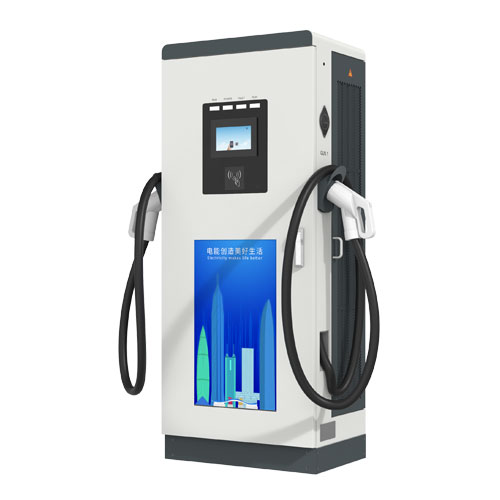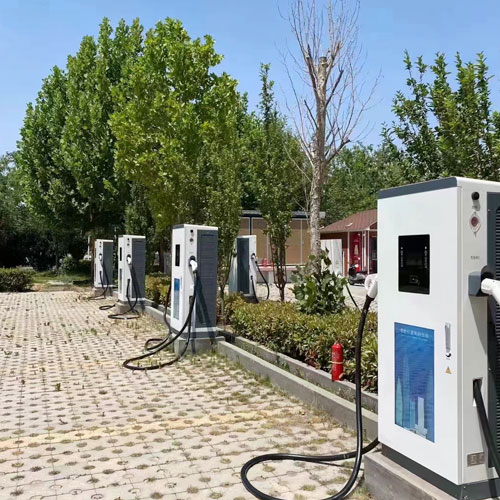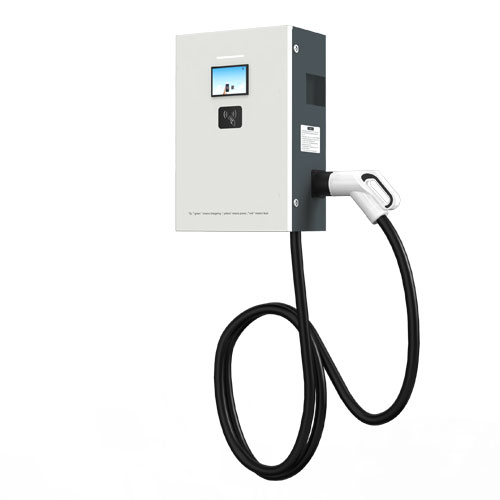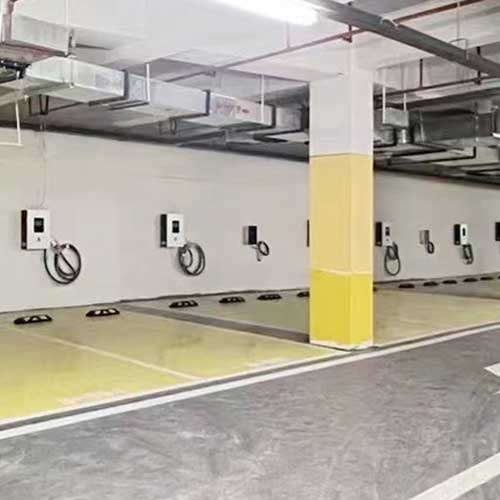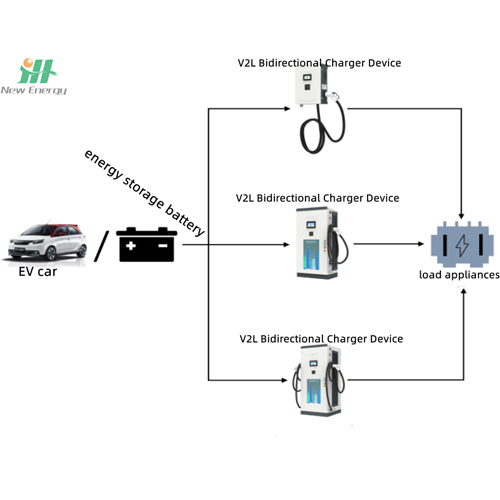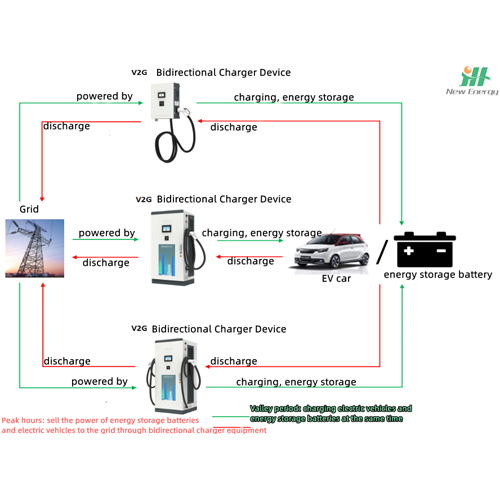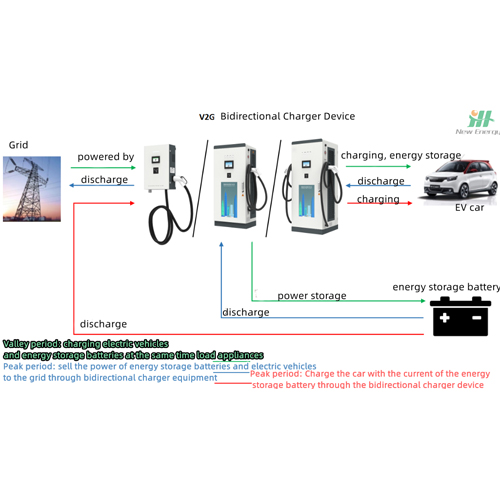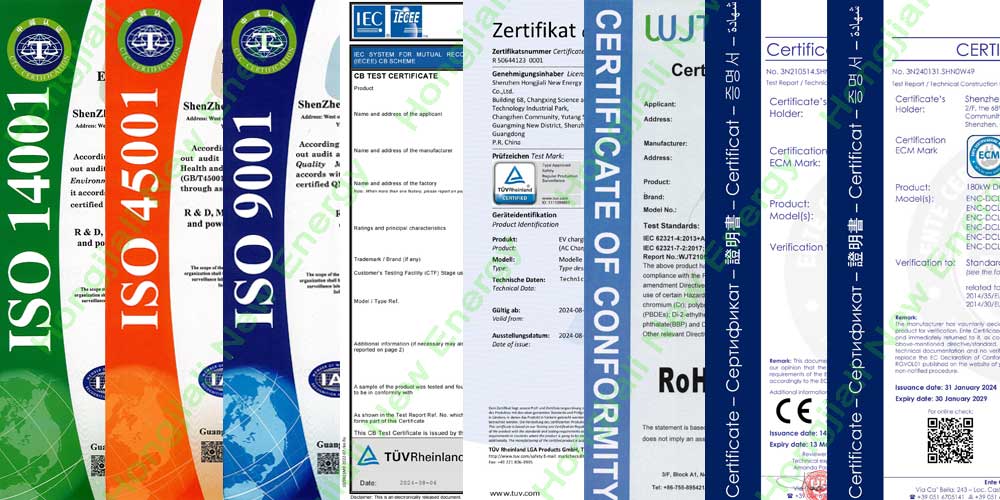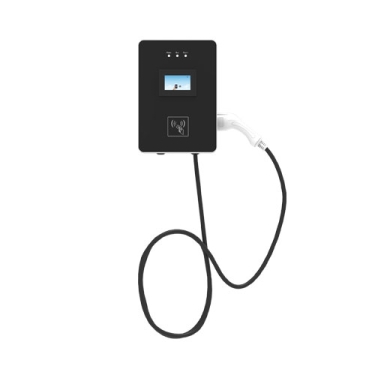-
 +86 18924678741
+86 18924678741 -
 sales@hjlcharger.com
sales@hjlcharger.com -
 Shenzhen City, Guangdong Province, China
Shenzhen City, Guangdong Province, China
Vehicle-to-grid (V2G) solutions have transformed the charging infrastructure. contact us! Our vehicle-to-grid (V2G) software solutions ensure safe and efficient power transfer. Hongjiali's bi-directional EV charger enables faster EV charging and discharging. more compact. Updated lightweight design, easy to install, suitable for your life. More versatile. Hongjiali launched two-way electric vehicle charging. You can power your home during a power outage, earn money from shared energy, and charge your car. bidirectional ev charger product parameters:
Product number | DCB007A-V2G | DCB015A-V2G | DCL030A-V2G | DCL060A-V2G | ||
Detailed specifications | rated power | 7kW | 15kW | 30kW | 60kW | |
charging equipment | Installation method | Wall-mounted | Floor-mounted | |||
route | down in down out | |||||
Equipment size | Subject to P/L | Subject to P/L | ||||
Rectification mode | Input voltage range | 175~305VAC | 260~485VAC | |||
input voltage frequency | 45~55Hz | 45~65Hz | ||||
Output voltage range | 200~750VDC | 150~750VDC | ||||
Maximum output current | 23.4A | 50A | 100A | 200A | ||
Inverter mode | DC input voltage range | 300~750VDC | ||||
DC input maximum current | 23.4A | 50A | 100A | 200A | ||
AC output voltage range | 175VAC~305VAC | 260~485VAC | ||||
AC output frequency | 45Hz-55Hz | 45~65Hz | ||||
cable length | 5m | |||||
Measurement accuracy | Level 1 | |||||
Electrical indicators | Current limit protection value | ≥110% | ||||
Voltage regulation accuracy | ≤±0.5% | |||||
Steady flow accuracy | ≤±1% | |||||
Ripple factor | ≤±1% | |||||
efficiency | Rectification mode ≥93% Inverter mode ≥94% | ≥94.5% | ||||
power factor | ≥0.99 (above 50% load) | |||||
Harmonic content THD | ≤5% (above 50% load) | |||||
feature design | HMI | 7 inch LCD color display touch screen | ||||
charging mode | Automatic charging/fixed power/fixed amount/fixed time | |||||
payment method | Credit card payment/scan code payment | |||||
Networking | Ethernet 3G/4G | |||||
safety design | Executive standard | GB/T20234, GB/T18487, GB/T27930, NB/T33008, NB/T33002 | ||||
security function | Charging gun temperature detection, over voltage protection, under voltage protection, overload protection, short circuit protection, grounding protection, over temperature protection, low temperature protection, insulation monitoring protection, reverse polarity protection, lightning protection, emergency stop protection, leakage protection | |||||
Environmental indicators | Operating temperature | -25℃~+55℃ | ||||
Working humidity | 5%~95% non-condensing cream | |||||
working altitude | <2000m | |||||
Protection class | IP54 | |||||
cooling method | air cooling | |||||
noise control | ≤60dB | |||||
MTBF | 100,000 hours | |||||


